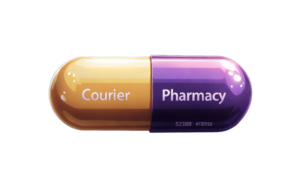Fibromyalgia is a long-term condition that causes ongoing pain, tiredness, and a mix of other symptoms, like trouble sleeping, memory issues, and digestive problems. It’s a complex disorder that affects millions of people worldwide—mostly women in middle age—but finding effective, lasting relief has always been a challenge. Many people with fibromyalgia try different medications, therapies, and lifestyle changes, often with mixed results. Recently, though, there’s been growing interest in a medication called Low Dose Naltrexone (LDN) as a potential new option. In this blog, we will discuss the first meta-analysis carried out to assess the effectiveness of LDN in fibromyalgia.
Table of contents
- Key takeaways
- What is fibromyalgia?
- What is Low Dose Naltrexone (LDN)?
- Why Look at LDN for Fibromyalgia?
- The evidence behind low-dose naltrexone use in fibromyalgia
- The first meta-analysis on Low-Dose Naltrexone (LDN) for fibromyalgia: What does it mean?
- What did the meta-analysis find?
- Side effects of LDN
- Other conditions which may benefit from LDN
- In summary:
- The future for LDN
- Summary of meta-analysis findings
- What does this mean for people with fibromyalgia?
- FREE LDN Consultation at Courier Pharmacy
- References:
Key takeaways
- The first major review (meta-analysis) combining all the best studies on LDN for fibromyalgia has recently been carried out.
- The study found that low-dose naltrexone (LDN) can significantly reduce pain in people with fibromyalgia.
- LDN is generally well-tolerated, but it may cause more vivid dreams compared to a placebo.
- LDN helps lower pain intensity, but it doesn’t have much effect on how sensitive people are to touch or pressure.

What is fibromyalgia?
Fibromyalgia is a long-lasting health condition that causes a wide range of symptoms, which can be different for each person and may change over time.
The most common problem is ongoing pain throughout the muscles and joints. In addition, people often also feel extremely tired, have trouble sleeping, get tingling or numbness in their hands and feet, struggle with memory and concentration (“brain fog”), experience stomach or digestive issues, headaches, and have low mood or depression [1].
Many people with fibromyalgia notice that their whole body feels sore, and they develop sensitive spots called “tender points” that hurt more than usual when pressed [2].
How common is fibromyalgia?
Fibromyalgia is relatively common, affecting between 0.2% and 6.6% of the general population, and is especially common in the USA.
It tends to affect women in middle age the most, particularly those with other joint or muscle conditions [3].
Other things that can increase the risk of developing fibromyalgia include being overweight, smoking, not drinking alcohol, or having other health problems such as diabetes, irritable bowel syndrome, kidney problems, or lupus [4].

What is Low Dose Naltrexone (LDN)?
Naltrexone was originally used in much higher doses to help people overcome opioid or alcohol addiction.
But in the last decade, researchers have started exploring its effects at much lower doses—usually between 1.5mg and 4.5mg per day—for conditions like fibromyalgia, chronic pain, and some autoimmune disorders.
At these lower doses, LDN is thought to work differently, possibly calming inflammation and helping to “reset” pain pathways in the brain and nervous system [5].
Why Look at LDN for Fibromyalgia?
People with fibromyalgia often experience widespread pain, fatigue, sleep problems, and “brain fog”.
The exact cause isn’t fully understood, but it’s believed to involve abnormal pain processing and possibly low-level inflammation in the nervous system.
Low-dose naltrexone (LDN) is a newer treatment option being explored for fibromyalgia. Unlike the higher doses of naltrexone used for addiction, LDN is thought to help by calming inflammation in the nervous system and supporting natural pain-relief pathways in the body.
It does this by affecting specific immune and pain receptors, such as TLR-4, and by temporarily blocking opioid receptors, which may help “reset” the body’s pain signals [6].

The evidence behind low-dose naltrexone use in fibromyalgia
So far, studies—including clinical trials and patient reports—suggest that LDN can be both effective and safe for people with fibromyalgia. However, most of the available evidence comes from smaller studies and reviews, which means that we still need more large, high-quality research to confirm its benefits and safety [7].
A meta-analysis confirming the role of LDN in treating fibromyalgia
At this stage, there hasn’t yet been a significant “meta-analysis” (a study that combines results from many smaller studies) to fully confirm how well LDN works for fibromyalgia.

The first meta-analysis on Low-Dose Naltrexone (LDN) for fibromyalgia: What does it mean?
A recent scientific study, published in the Annals of Medicine & Surgery (May 2025) [2], marks a significant step forward in understanding how low-dose naltrexone (LDN) may help individuals with fibromyalgia.
For the first time, researchers have conducted a meta-analysis—a special kind of study that pulls together results from several smaller studies—to get a clearer, more reliable answer on whether LDN is both effective and safe for treating fibromyalgia.

What is a Meta-Analysis?
A meta-analysis is like taking all the puzzle pieces from different studies and putting them together to see the bigger picture.
Instead of relying on just one small study (which might have limited results or even conflicting findings), a meta-analysis looks at the combined data from multiple studies.
This helps researchers and doctors get a much stronger sense of what really works, how well it works, and how safe it is, because the evidence is built on a larger group of people and more data.

Why is this important for fibromyalgia and LDN?
Finding effective treatments for fibromyalgia can be tough, and many people don’t get much relief from traditional options.
However, low-dose naltrexone (LDN) has shown promise in case reports and smaller studies; however, due to their small size and sometimes conflicting results, it is challenging for doctors and patients to determine with certainty whether LDN is truly helpful.
That’s why this new meta-analysis is so valuable—it combines the results of several high-quality studies, giving us a clearer, more trustworthy answer.

What did the meta-analysis find?
The researchers gathered all the available clinical trials where LDN was tested against a placebo (dummy pill) in people with fibromyalgia. By combining the data, they found that:
- LDN can significantly reduce pain in people with fibromyalgia compared to a placebo.
- It is generally safe, with few serious side effects. The most common minor side effect was vivid dreams.
- Some people experienced long-lasting improvement in symptoms.
While the results are promising, the researchers also pointed out that more large, high-quality studies are needed to confirm these findings and to better understand who benefits the most from LDN.
This study found that using low-dose naltrexone (LDN) led to a clear reduction in pain for people with fibromyalgia, compared to those taking a placebo. However, LDN didn’t make a difference in how sensitive people were to touch or pressure.

Side effects of LDN
People taking LDN were not more likely to get headaches, but they did experience vivid dreams more often than those on placebo [2].
How LDN is thought to work in fibromyalgia
Recent research is changing the way we understand fibromyalgia. Instead of viewing it solely as a problem with pain processing, scientists now believe that inflammation in the nervous system may play a central role.
In fibromyalgia, there’s a constant “conversation” happening between nerve cells (neurons) and immune cells.
This back-and-forth can become dysfunctional, leading to the release of higher levels of inflammatory messengers, such as cytokines and neuropeptides.
These chemicals can heighten pain sensitivity, making people with fibromyalgia feel pain more intensely and for more extended periods—even in response to things that shouldn’t normally hurt [8].
Low-dose naltrexone (LDN) is showing promise because it targets several of these inflammatory pathways. Here’s how LDN is thought to work in fibromyalgia and similar conditions:
- Blocking TLR-4 Receptors:
LDN can block a specific receptor called Toll-Like Receptor 4 (TLR-4) found on immune cells like macrophages and microglia (the immune cells of the brain and spinal cord) [9]. When TLR-4 is activated, it triggers the release of inflammatory chemicals that contribute to pain and fatigue. By blocking TLR-4, LDN helps calm this inflammatory response, potentially reducing pain and other symptoms. - Modulating Immune Cell Activity:
LDN doesn’t just block inflammation—it also fine-tunes the immune system. It can reduce the activity and growth of specific immune cells (T-cells), which are often overactive in chronic inflammatory conditions. At the same time, LDN boosts the “cleanup” activity of macrophages by raising the chemical messengers IL2 and TNF-?, which helps clear away damaged cells and supports healing [9] - Increasing Helpful Immune Signals:
LDN has been shown to increase the levels of certain immune messengers, such as IL-2 and TNF-?. While TNF-? is usually associated with inflammation, in the right balance, these signals can help the immune system function more effectively and support tissue repair.
Because of these actions, LDN acts as an analgesic (pain reliever), anti-inflammatory, and immunomodulator (regulator of the immune system). This means it not only helps with pain but may also address the underlying inflammation and immune system imbalance seen in fibromyalgia.

Other conditions which may benefit from LDN
What’s especially interesting is that these benefits aren’t limited to fibromyalgia. LDN has shown potential in other chronic pain and inflammatory conditions—like multiple sclerosis and chronic fatigue syndrome—where similar immune and nervous system interactions are at play [10].
This suggests that LDN’s way of “resetting” the immune response could be helpful in a range of disorders where chronic inflammation is a problem.
There are even parallels between LDN and other advanced therapies, such as stem cell treatments, which also work by calming inflammation and supporting tissue repair in the nervous system. These similarities present exciting opportunities for future research, as scientists seek new approaches to treating complex conditions like fibromyalgia by targeting the immune system and the communication between nerves and immune cells.

In summary:
- Fibromyalgia may be driven by ongoing inflammation involving both nerve and immune cells.
- LDN helps by blocking key inflammatory pathways, rebalancing immune responses, and supporting healing.
- These effects make LDN promising not just for fibromyalgia, but for other chronic pain and inflammatory disorders as well.
- The way LDN works is similar in some ways to emerging treatments like stem cell therapy, suggesting new directions for future research and treatment.

The future for LDN
There’s still a lot to learn, especially since studies have used different LDN doses, and the number of participants in each study has been small. Most people in these studies were also taking other medications, but these didn’t seem to affect how well LDN worked.
This is the first major review to combine and analyse all the best research on LDN for fibromyalgia.
While the results are promising, the evidence remains limited by the small number and size of studies, as well as some differences in the research methodology.
More large, high-quality studies are needed to confirm these findings and work out the best way to use LDN for fibromyalgia.

Summary of meta-analysis findings
- LDN can help reduce pain in fibromyalgia, but doesn’t change how sensitive people are to touch.
- It’s generally safe, with vivid dreams being the most common minor side effect.
- More research is needed to confirm these results and to find the best dose and approach for patients.

What does this mean for people with fibromyalgia?
If you’re living with fibromyalgia and struggling to find effective pain relief, LDN could be worth discussing with your doctor or pain specialist.
The evidence so far suggests that it can help reduce pain for some people, with a low risk of serious side effects.
However, it’s not a magic cure, and it may not work for everyone.
LDN is still considered “off-label” for fibromyalgia, meaning it’s not officially licensed for this use, but a knowledgeable healthcare provider can prescribe it.

FREE LDN Consultation at Courier Pharmacy
If you are interested in trying LDN for fibromyalgia, complete the FREE online LDN consultation at Courier Pharmacy.
Once you have completed the questionnaire, you can select the LDN formulation that you prefer and even book FREE follow-up consultations with our experienced prescribers.
This information is for general guidance only. For personalised medical advice, please consult your doctor or healthcare provider.

References:
5. Courier Pharmacy. (n.d.). Can LDN help with Long COVID? Available at: https://courierpharmacy.co.uk/can-ldn-help-with-long-covid/ (Accessed: 19 June 2025).



